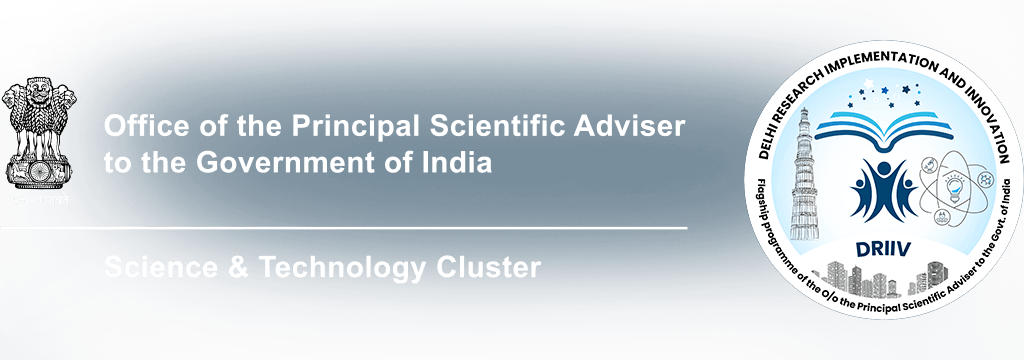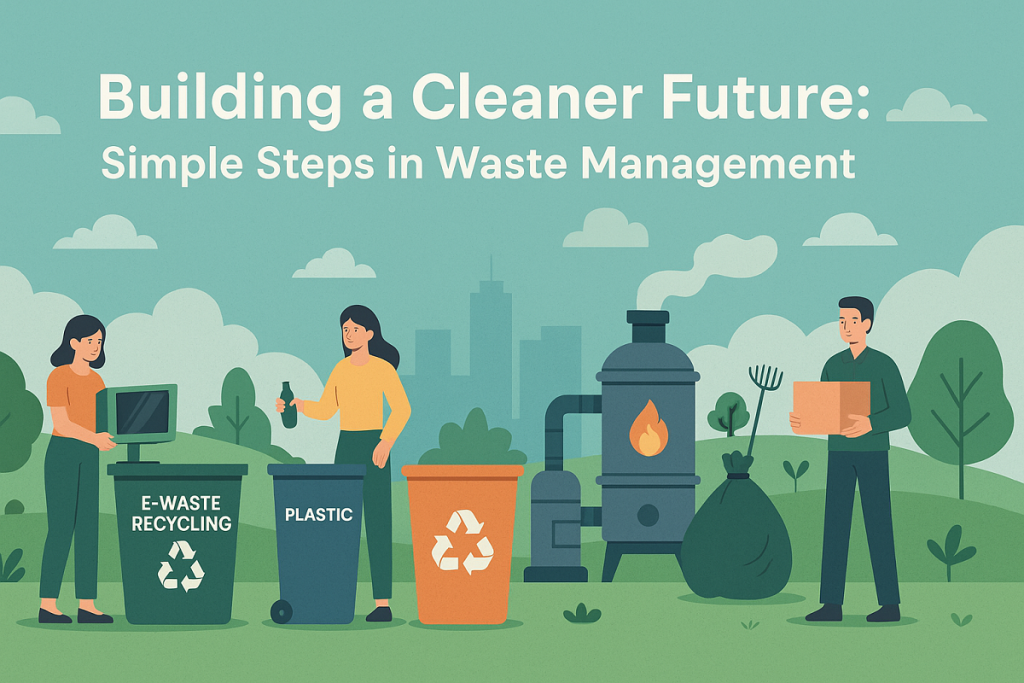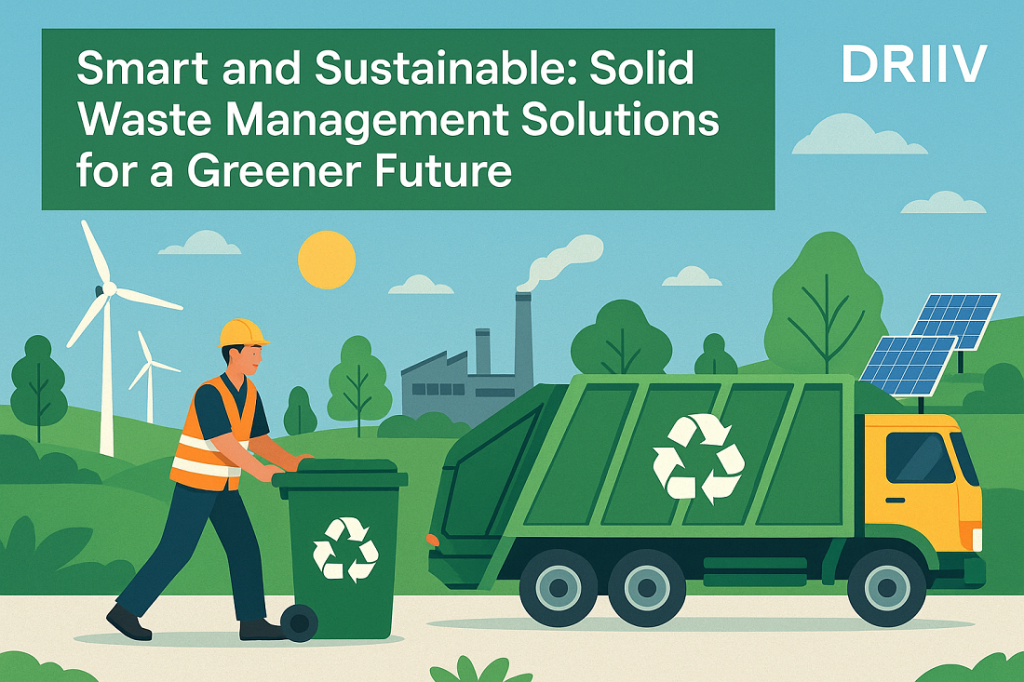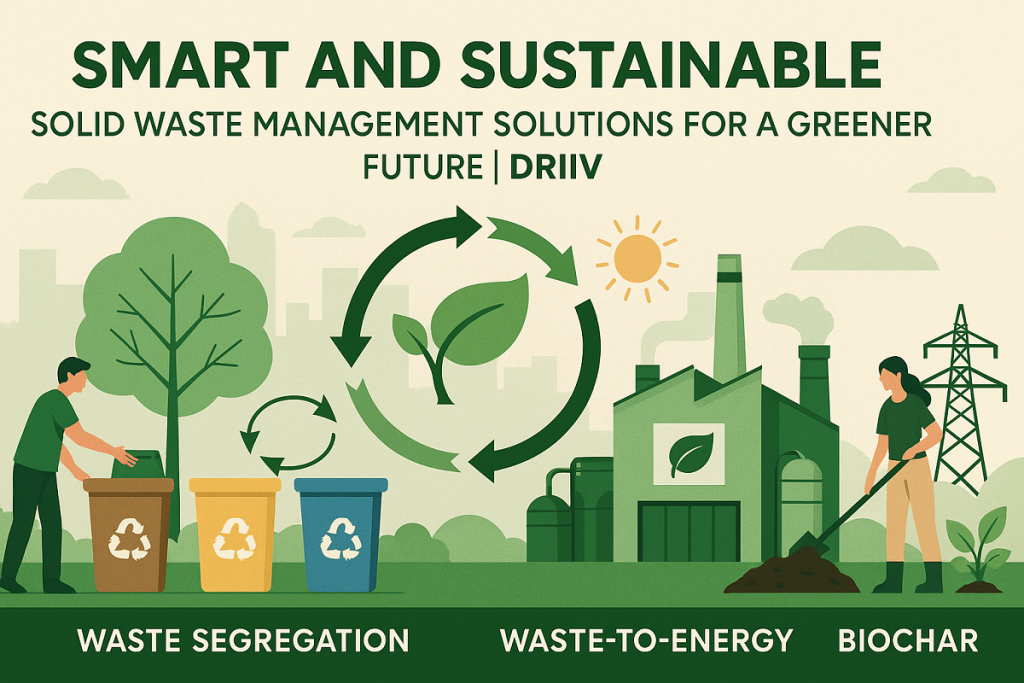At DRIIV, we believe a cleaner and greener environment is possible when we all work together. With today’s growing population and rising consumption, waste has become a major challenge. From electronic gadgets to plastic bottles, everything we throw away has a big impact on our planet. But there’s hope. With the right strategies, technology, and Community Engagement, we can manage waste effectively.
In this blog, we’ll explain how E-Waste Recycling, Plastic Waste Management, Bio-mining, Plasma Pyrolysis, Sustainable Packaging Solutions, and Decentralized Solid Waste Management can change the way we treat waste and protect the environment.
1. What is E-Waste and Why is Recycling Important?
E-Waste refers to discarded electronic items like computers, mobile phones, televisions, and other devices. These items often contain toxic materials such as lead, mercury, and cadmium. If not managed properly, they can pollute our soil and water, causing serious harm to human health and nature.
E-Waste Recycling is the process of collecting, sorting, and safely extracting useful materials like copper, aluminum, and plastics from these devices. It reduces the need for mining, conserves natural resources, and prevents hazardous waste from ending up in landfills.
DRIIV supports innovative E-Waste Recycling technologies and partners with local authorities to promote awareness and safe disposal.
2. Tackling Plastic Waste through Smart Management
Plastic is everywhere—in packaging, bags, bottles, and even clothes. Unfortunately, plastic doesn’t decompose easily and stays in the environment for hundreds of years.
Plastic Waste Management includes:
- Reducing single-use plastics.
- Promoting recycling.
- Encouraging the use of biodegradable alternatives.
- Implementing policies for extended producer responsibility (EPR).
At DRIIV, we work with startups and researchers to create smart Plastic Waste Management systems that include collection centers, recycling hubs, and education campaigns to reduce plastic use at the source.
3. What is Bio-mining and How Does It Help Clean Waste Dumps?
Over the years, large waste dumps have formed in cities. These landfills release harmful gases, attract pests, and pollute water sources.
Bio-mining is an eco-friendly method to clean these waste dumps using microbes and biological processes. It separates recyclable waste from non-recyclable materials, which can then be reused or safely disposed of.
DRIIV is collaborating with local governments and researchers to bring Bio-mining projects to life, helping cities reclaim land and reduce pollution.
4. Community Engagement: The Heart of Waste Management
Technology alone cannot solve the waste crisis. People’s participation is essential. Community Engagement means involving local communities in waste segregation, collection, and awareness programs.
When people understand the importance of proper waste disposal and recycling, they are more likely to follow good practices at home, schools, and workplaces.
DRIIV runs various programs to train communities, school children, and residential societies on waste segregation and recycling practices. Our aim is to make citizens active partners in environmental protection.
5. Plasma Pyrolysis: High-Tech Disposal for Hazardous Waste
Some types of waste, like biomedical or chemical waste, are dangerous and need to be treated using advanced technologies.
Plasma Pyrolysis is a high-temperature process that uses plasma (ionized gas) to break down hazardous waste into safe gases and solid residues. It is especially useful for treating hospital waste, contaminated plastics, and toxic chemicals.
At DRIIV, we promote the use of Plasma Pyrolysis in hospitals and laboratories to manage biomedical waste safely and effectively.
6. Sustainable Packaging Solutions: Say Goodbye to Plastic Wrappers
Every year, millions of tons of plastic packaging end up in landfills or oceans. Replacing them with eco-friendly alternatives is a key step toward sustainability.
Sustainable Packaging Solutions include:
- Reusable cloth or paper bags.
- Plant-based packaging.
- Compostable wrappers.
- Recyclable materials.
DRIIV supports innovations in Sustainable Packaging Solutions by encouraging businesses and startups to develop eco-friendly packaging that is safe, affordable, and easily available.
7. Why We Need Decentralized Solid Waste Management
Centralized waste systems often face issues like delays, high costs, and inefficiencies. A better alternative is Decentralized Solid Waste Management—a system where waste is managed locally at the ward or community level.
This model allows for:
- Faster waste segregation.
- Lower transport costs.
- Community participation.
- Better recycling rates.
DRIIV promotes Decentralized Solid Waste Management across urban and rural areas by building small-scale composting units, waste-to-energy models, and recycling centers within communities.
How DRIIV is Making a Difference
At DRIIV, we are committed to building partnerships with researchers, innovators, local authorities, and citizens. Our mission is to develop sustainable models of waste management that are scalable, efficient, and inclusive. From supporting Bio-mining projects to encouraging Sustainable Packaging Solutions, we are working to make India cleaner and greener.
FAQs
Q1: What is the best way to start E-Waste Recycling at home?
Answer: Start by separating old electronics and taking them to certified e-waste collection centers. Avoid throwing them in the dustbin.
Q2: How can schools promote Plastic Waste Management?
Answer: Schools can organize clean-up drives, replace plastic with eco-friendly items, and teach students about the harms of plastic pollution.
Q3: Is Bio-mining safe for the environment?
Answer: Yes, Bio-mining uses natural processes and is much safer than traditional landfill methods. It helps recover usable materials and reduces pollution.
Q4: How does Plasma Pyrolysis differ from burning waste?
Answer: Unlike open burning, Plasma Pyrolysis occurs in a closed chamber with no oxygen, which prevents harmful emissions and completely breaks down toxic materials.
Q5: What are some examples of Sustainable Packaging Solutions?
Answer: Examples include paper straws, biodegradable food containers, reusable cloth bags, and cornstarch-based packaging.
Q6: How can I participate in Decentralized Solid Waste Management in my area?
Answer: You can start by segregating waste at home, composting wet waste, and joining or forming a local waste management committee.
Conclusion
Waste is a challenge, but also an opportunity. With simple steps and the right mindset, we can build a clean and sustainable future. From E-Waste Recycling to Plasma Pyrolysis, every solution plays an important role. At DRIIV, we are proud to be part of this journey, creating impactful projects and encouraging Community Engagement at every level.
Let’s work together for a greener tomorrow!




